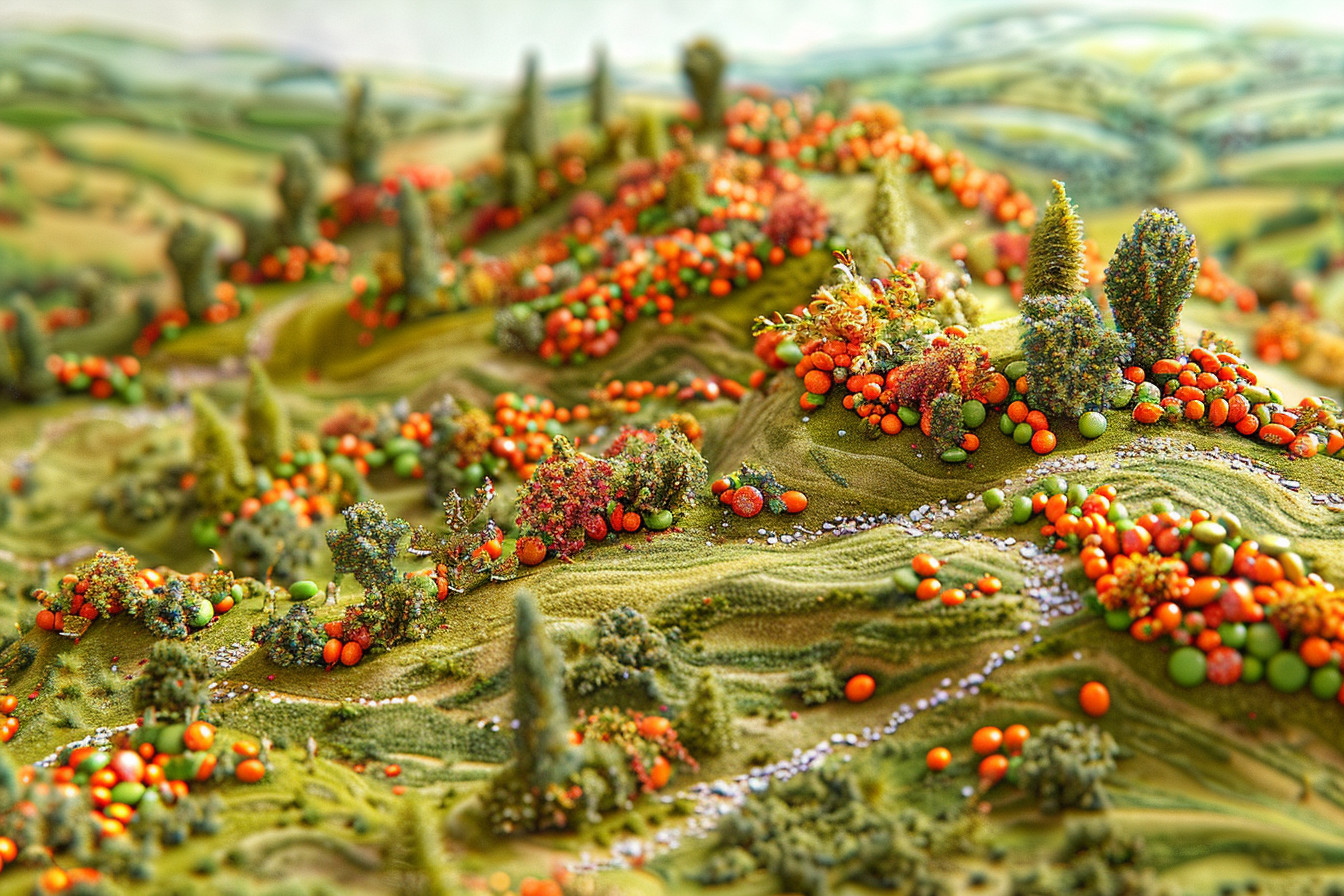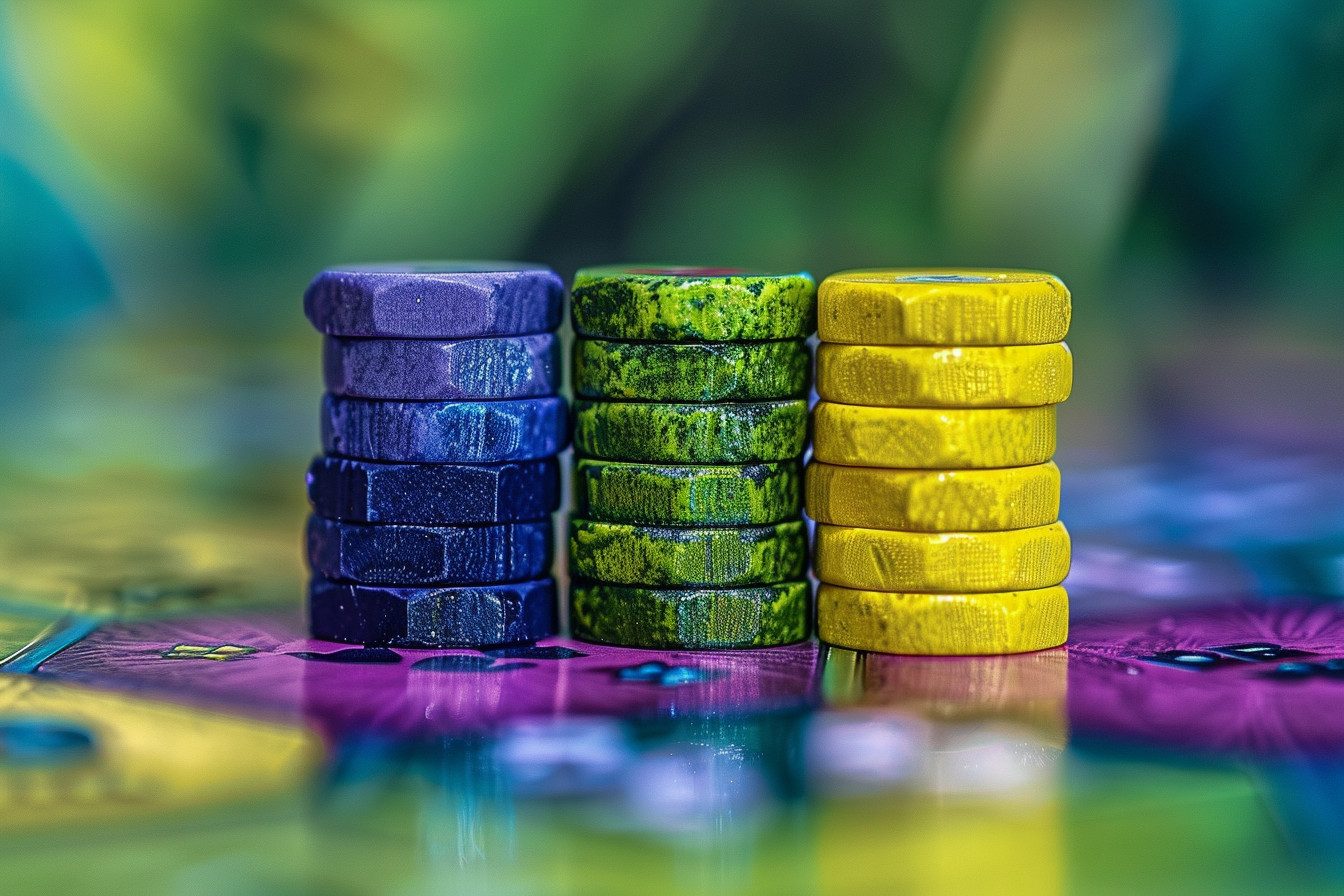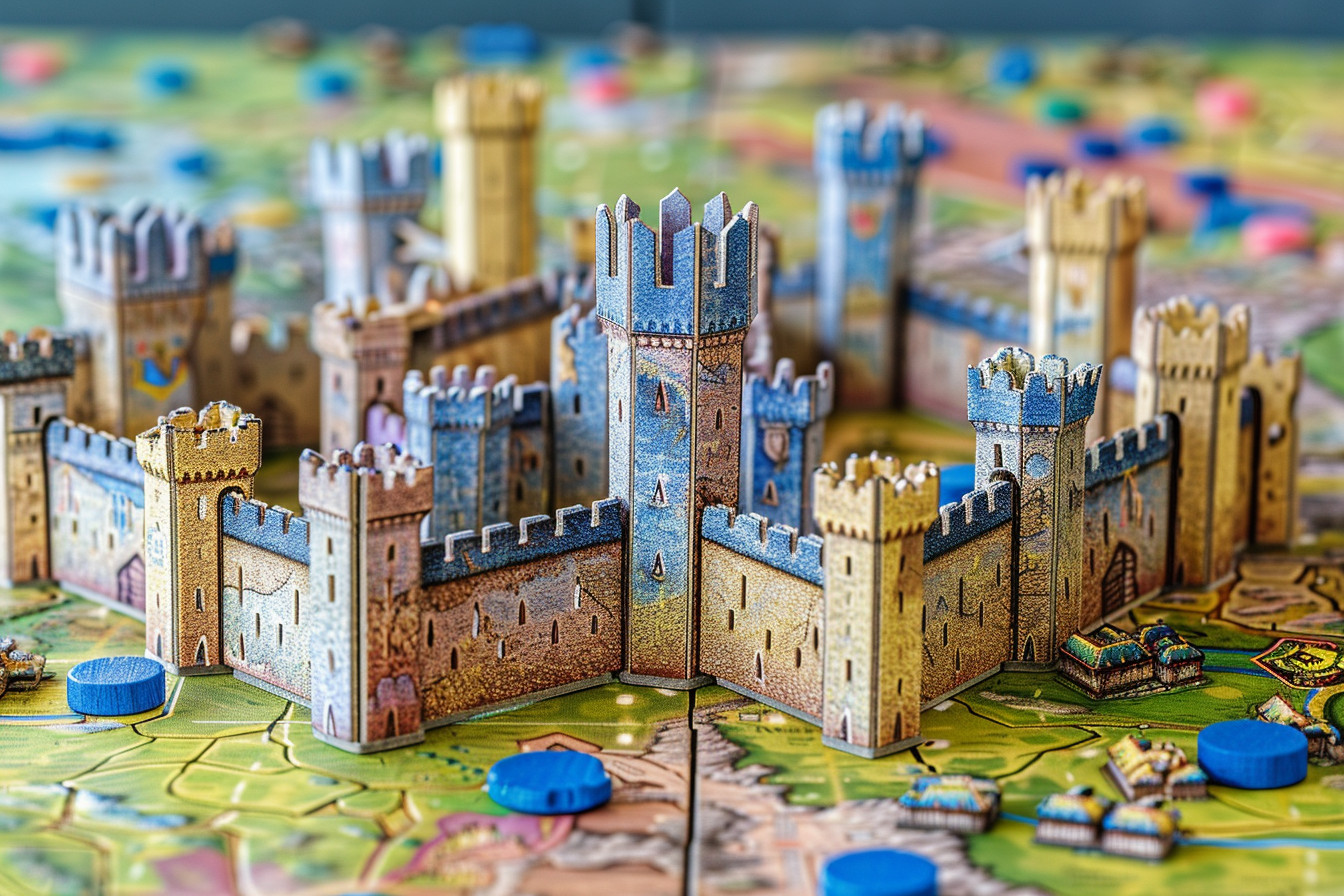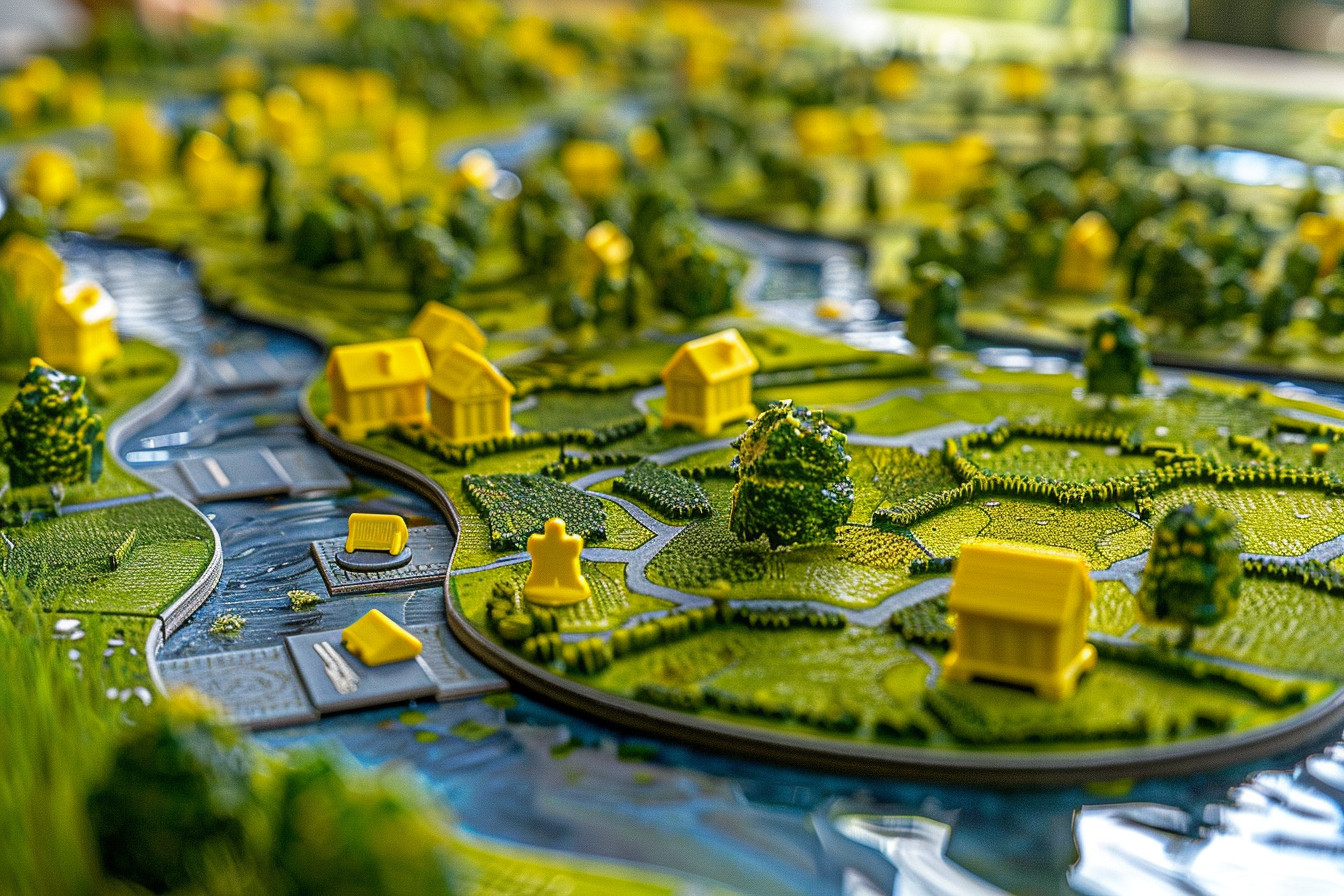My earliest recollection of playing Catan was on a family vacation. At first, the game seemed difficult, but we soon got the hang of it. As the dice began to roll and the first few resources were divvied up, it became a great deal of fun. My younger female cousin, who was ten years old at the time, mastered the game. While we were all trading various resources like wheat, wood, and ore from our stockpiles, she had an iron will and focused mainly on accumulating plenty of sheep. And in the end, she won by a long shot. These are the sorts of things that happen in Catan.
Creating a game of Catan makes you feel a little bit like the kid you once were, assembling a unique group of hexagonal tiles to form the personalized game board of your upcoming strategic contest. The terrain — the forest, the brick-like hills — will yield the resources you’ll need for your strategic contest when your dice roll out the way they should. And if they don’t, you’ll be in Robber’s Canyon; a barren tile that produces no resources.
The game begins as each player sets down two villages and two connecting roads on the hexagonal grid that is the game board. How and where you place these pieces will greatly affect your chances of winning. This is because those initial villages are all but guaranteed to be part of your network of communities and because they are what starts the flow of resource cards into your hand. And not all resources are named equal. Some have a tendency to lead more directly to victory than others.
One game night spent with friends stands out in my memory for the extensive discussions we had during the initial setup phase. My friend Mike is a bit of a Catan shark; he always goes straight for the jugular, and that night was no exception. He plopped his starting settlements down in the middle of the board, right next to the juiciest wheat and ore tiles, and proceeded to aim for a city-centric game that would surely garner him enough points to win. Meanwhile, I staked a claim for the corner of the board with the crappiest wheat and led a game of living on the edge—of Catan poverty.
Catan is all about gathering and using resources in the most efficient—and effective—way. On each player’s turn, a pair of dice is rolled to see which hexes on the “island” yield resources. These resources can then be used to build roads, settlements, or cities. Simple, right? Well, the first major game-breaker is this: Unlike in most other resource-management games, the resources that you gather here entitle you to resource cards that you place in your hand. When you play a resource card, you’re not spending it, as you would in other games. You’re increasing the size of your hand!
A crucial part of Catan is commerce. You won’t be able to build anything without obtaining the necessary resources. But no single die roll gives you all the two resources you need to obtain a new settlement or the three resources you need to upgrade a settlement to a city. In other words, with a mixture of card draws and dice rolls, you’re sort of bound to come up short now and then.
A game that I remember vividly had intense bargaining happening at a critical moment: My brother had to have wheat because he absolutely had to build a city. He started right off by offering what he thought was a very generous, almost too good to be true, three sheep–for one wheat deal. I was holding the wheat, and I knew he was in a tight spot, so I bargained for something lower. I said I’d think about it. Then he said he’d throw in two wood, and I took it because in The Settlers of Catan, if you’re holding the resources someone else needs in order to build, then you’re one up on them.
Indeed, the very real option to compete for both the “Longest Road” and the “Largest Army” makes trading crucial. Not only must the players’ property empire generate far-too-many resources to maintain the illusion of realism (requiring lots of trade), but the players must also spend so much time building up to the victory conditions. Regrettably, there’s just something irksome about a game that makes you work so hard to ensure your “stability.”
The mix of good fortune from rolling dice and deep strategy from managing resources and conducting trade is what makes “Settlers of Catan” an addictive and fully absorbing pastime. Players are so engaged that they often don’t think to look at the clock. The game carries on with the players taking turns in order until someone reaches the 10 victory points required to win.
There are many reasons why Catan has such enduring popularity, and the foremost is its easy-to-grasp rule set. For those who are used to more traditional fare—like Risk or Monopoly—Catan’s rules don’t require much adjustment, and even those who’ve never played a modern Euro-style board game before can pick up Catan’s core concepts pretty quickly. Yet its rules also give an underlying complexity that lets the kinds of meaningful decisions I value in my games arise organically from play.
A new game means a new setup and different strategic possibilities. The board consists of modules, each of which contains a number of spaces, and the board changes after each setup, bringing with it a high replay value. This is also a game about trading, and a game about trading means players are going to have to interact. Beyond trading, my favorite thing about Carcassonne is the balance between strategy and luck.
Catan’s relatively brief duration makes it just right for casual gaming sessions, and if all that sounds fun to a more serious gamer, its depth and complexity offer plenty in the way of substance. As for the game itself, it’s incredibly well-put-together. Quality components are part of that. The detailed plastic structures and buildings don’t grow tiresome to look at because the game rarely lasts more than an hour and a half.
Many newcomers become hopelessly enamored with the board game Settlers of Catan, a game that mixes luck and strategy in equal parts. My friend became a convert. He hadn’t been skeptical, only indifferent. Then he experienced the joys of playing, the sheer fun of taking a card from his hand and grinning at an opponent as he laid it across the table. When Paul saw the charisma of the game that we all know, he reacted as many do when they join the cult of Catan.
While trading is generally a beneficial aspect of the game, it can sometimes lead to problems if players rig the deals to confer an unfair advantage, or if they won’t trade with each other at all. What would appear to be the game system’s most frequently exploited loophole seems also to be its single significant flaw.
That, and an aspect that is likely to be a considerable point of protest for Settlers newbies: the seeming conviction of the designers that everyone will want to go through with a fair amount of resource management on each person’s turn.
Final Thoughts
The game of Catan, in the board-gaming world, is still a favorite, for many good reasons. It’s a relatively simple game; each turn you either build something or you gather resources to make building that something on the next turn a possibility. Sometimes building or gathering resources requires trade with your opponents.
And the whole time you’re trying to secure your stake in a little slice of Catan, there’s this grand uncertainty of whether you can make it all fit together—your inefficient wood-gathering operation with enough brick to build roads; your recent luck with wheat that allows you to look beyond the prospect of a one-poverty-cow town to the establishment of a city.







